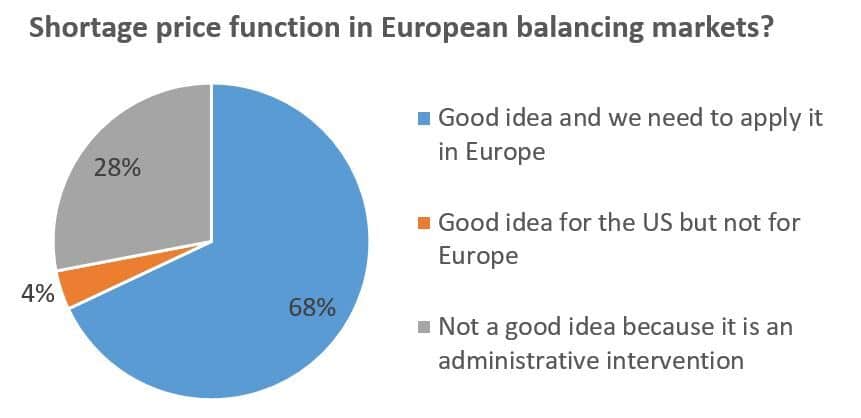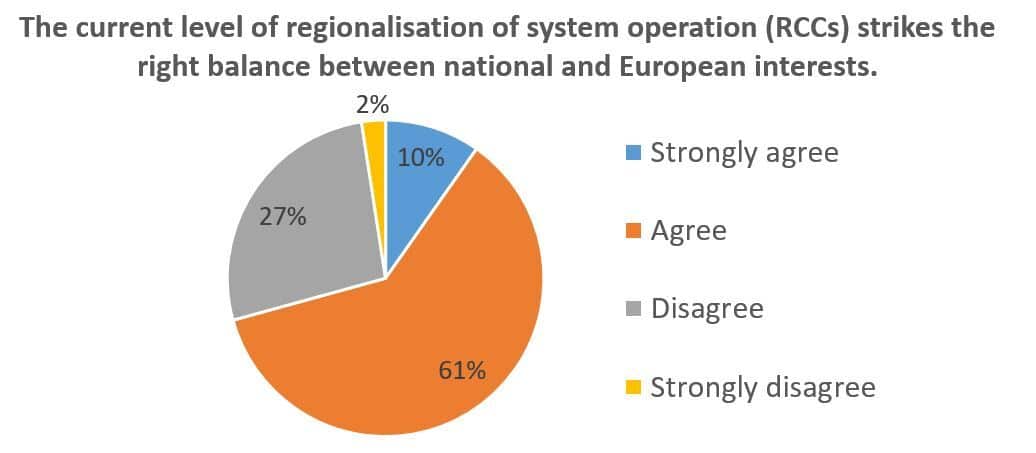Evolution of Electricity Markets in Europe: where are we, and where are we going?
Highlights from the online event: Defining moments and open issues in European electricity markets
Defining moments and open issues in the Evolution of Electricity Markets in Europe
A teaser of the #EEME book: The Evolution of Electricity Markets in Europe
Electricity markets in Europe
This edition of the #FSRinsights series was organised around the launch of the new #EEME book on the Evolution of Electricity Markets in Europe by Leonardo Meeus. Assistant Professor Line Roald (University of Wisconsin-Madison) and Associate Professor Anthony Papavasiliou (Université Catholique de Louvain) joined the FSR research team to discuss defining moments and two open issues in European electricity markets.
The debate was organized around two chapters of the #EEME book: chapter 5 on who is responsible to balance the system and chapter 6 on how to organize system operation and connection requirements. After an introduction to the topic by the FSR researchers, the discussion with the academic panellists focused on the open issues of scarcity pricing in balancing markets and regional system operation.
Download the presentation
Here are some take-aways from our online event:
Scarcity pricing in balancing markets
In a power system, supply needs to equal demand in real-time. If not, the frequency starts deviating from its reference value. As it is hard to produce or consume exactly as scheduled or forecasted, balancing markets are in place to procure the energy needed to correct any imbalances.
In the introduction of this part, Tim Schittekatte briefly described that at the onset of the liberalisation of the power sector in the EU, balancing was rather a mechanism than a market. There were very few players competing to offer balancing services. However, as also outlined in the book, since then we have come a long way in terms of balancing market reforms. Balancing market reforms stimulated competition and allowed for new entrants. A key legislation in this regard is the Electricity Balancing Guideline (EB GL), one of the eight currently existing European electricity network codes and guidelines. Another major achievement of this regulation was the formalisation of EU balancing platforms for the joint procurement of balancing energy. These platforms are currently being set up. However, an evolving power system also requires further refinement of the market design. One innovative idea in that regard is the implementation of a shortage price function in the balancing market. This open issue was in-depth discussed in the debate.
The concept of a shortage price function is the following. Currently, in the rare event that balancing reserves are depleted, administrative curtailment has to take place. During those rare moments, the balancing energy price should spike very high, to the Value of Loss Load (VOLL). It is exactly these price spikes that are crucial for flexible resources (‘’peakers’’ or other technologies) to recuperate their investment costs. However, these price spikes are infrequent and highly unpredictable. What a shortage price function does is to provide a signal when the real-time balancing reserves are near depletion. More precisely, a “scarcity price adder” is calculated that equals zero when there are more than enough reserves but which rises gradually to equal VOLL when the reserves are very near to depletion. This scarcity price adder is added on top of the balancing energy price (paid to the grid users providing balancing energy) and/or the imbalance price (paid by grid users being imbalanced). As such, resources that are able to offer balancing energy at times when the system is stressed receive an additional financial reward and/or the parties being imbalanced at times of system stress will see their imbalance costs rise. The price spikes needed to recuperate the investment costs of flexible resources become less infrequent and smoother. Scarcity prices also enable increased engagement of demand response. Ideally, demand response should set the scarcity price and the need for a calculated scarcity adder should fade with time passing by. A shortage price function, also known as an Operation Reserve Demand Curve (ORDC), has been in place since several years in a selection of US power markets such as ERCOT, MISO and PJM. We asked the audience whether they think that implementing a shortage price function would also be a good idea in the EU context.

After the live polling, Anthony Papavasiliou explained that he sees a shortage price function not more of an administrative intervention than a reliability requirement is. Actually, an elastic shortage price function can be seen as an improvement of a hard reliability requirement. Anthony explained that there is a legal basis to implement a shortage price function in the European context and that its implementation can function in tandem with the existing European balancing platforms. He and his research team have conducted several studies and academic papers on how to implement a shortage price function in the Belgium context. In that regard, they work closely with the Belgian regulator (CREG) and are in dialogue with the Belgian TSO Elia [1]. However, several specific market design choices will have to be specified which are currently under discussion.
Further, when engaging with questions from the audience, it was clarified that a shortage price function is not an alternative to a Capacity Remuneration Mechanism (CRM) and both can co-exist. Instead, a shortage price function is a measure to make the existing energy markets work better and remove or at least reduce the need for a CRM. Therefore, the Clean Energy Package regards the implementation of a shortage price function as a last resort measure before considering the introduction of a CRM. In the debate, it also became clear that when implementing a shortage price function, the devil is in the details. An important implementation question is whether the scarcity adder should be added to both the balancing energy price and the imbalance price or only to the latter. Anthony explained that his work supports the practice to add the adder to both and coined it as ‘’the law of one price applied to real-time energy’’. Not all stakeholders agreed. Whether to apply the adder to the balancing energy price and/or imbalance price has important effects, for example, on exactly which resources being rewarded or penalised at times of high system stress. Anthony also underlined that we are currently missing a real-time market for reserves, while such a market is present in the US context. A real-time market for reserves is deemed necessary to correctly propagate the scarcity adder to the preceding wholesale electricity markets working in sequence.
On Twitter
I can also recommend the paper by Antony on his research for the Belgian regulator @CREG_be on scarcity pricing succinctly describing why equalising Balancing Energy and imbalance prices is the preferred rt market design
— Mathieu Fransen (@mathieufransen) December 9, 2020
Regional system operation
Some forms of regional cooperation and coordination in the European electricity sector have existed for roughly 100 years. In a more structured way, however, TSO coordination emerged in 2008 as a response of TSOs to disturbances that had happened previously, for example the system disturbance in 2006 or the Italian blackout in 2003. These incidents made TSOs realise that there is an increasing need to look beyond national borders to have a better understanding of how the electricity system is behaving in neighbouring countries and beyond.
In her introduction to the topic, Valerie Reif explained that, so far, we have seen three dedicate steps in the evolution of TSO regional coordination in Europe. First were the Regional Security Coordination Initiatives (RSCI) that TSOs had set up voluntarily starting with TSCNET and Coreso in 2008. Second was the formalisation of this cooperation in the form of Regional Security Centres (RSCs) in the System Operation Guideline (SO GL) in 2017, another crucial EU electricity network code. The SO GL also mandated the participation of TSOs in RSCs. Third is the enhancement of this framework for regional cooperation in the Clean Energy Package (2019) and the required transformation of RSCs into Regional Coordination Centres (RCCs) by mid-2022.
Along with this structure, also the importance and the number of tasks of these regional entities have evolved. As a starting point for the discussion with the academic expert Line Roald, we asked our audience whether they think that the regional approach we have arrived at today is sufficient, or whether we need an even more Europeanised approach. Below you can find the result of the polling.

After the live polling, Line Roald referred to some of the incidents that are discussed in the book (e.g. Italian blackout, cruise ship incident) as indeed relevant for the following development of cross-border cooperation. The question that was raised after these incidents in the 2000s was: how can we avoid similar incidents in the future, considering also that we are rapidly moving towards increased renewables integration and cross-border trading? Line explains that these blackouts were very different in nature to another event, which was the solar eclipse we also discuss in the book. In the latter case, you can plan for the event and coordinate among relevant parties in advance, while the former incidents require an ad hoc response as they happen unexpectedly. In the last decade, preparation for unexpected events is becoming harder due to the higher variability in power flows which arise from increased cross-border trading and more renewable energy. It became clear that we needed to take steps to adequately handle both types of events in Europe and that we need to focus on improving cross-border coordination.
During the debate it became clear that one important aspect of successful regional cooperation is a clear distribution of roles and responsibilities as well as a comprehensive governance framework. Line pointed to the fact that, at the end of the day, it is the system operator who are responsible for keeping the lights on. And that, therefore, it is sensible that the system operators have the final word on whether to implement a certain recommendation or coordinated action by the regional entity. In response to Line and the discussion in the live chat, Valerie explained the cornerstones of the governance framework of the upcoming RCCs as defined in the Clean Energy Package.
One important element is the requirement for RCCs to act independently of individual national interests and those of TSOs and to complement the role of TSOs by performing tasks of regional relevance assigned to them. A second important element is that TSOs can deviate from a recommendation only for reasons of operational security, and a justification is needed.
Both speakers agreed that while it has proven important to advance regional system operation in small steps at a time (and here and there accept compromises), we will likely see more cooperation and integration in the future. Where this will lead us is an open issue and its evolution will definitely be interesting to follow.
[1] Participants mentioned that in Ireland already a sort of shortage price function co-exists with a capacity remuneration mechanisms and that Poland is also investigating how to implement of a shortage price function.
Relevant links
- Leonardo Meeus (2020), The evolution of electricity markets in Europe. Edward Elgar Publishing.
- Evolution of electricity markets in Europe: online course discussing in depth the evolution of EU electricity markets driven by network codes and guidelines
- The EU electricity network codes (2020 ed.): detailed report about the impact of the EU electricity network codes and guideline on the Internal European Electricity Market
- The EU electricity network codes and guidelines: a legal perspective
- The EU clean energy package (ed. 2020)






